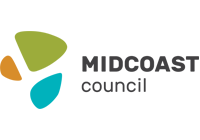Understanding the economic role of MidCoast Council provides a framework for understanding what policy responses and investment may be appropriate to support the growth of businesses and maintenance of a vibrant economy in the future.
The charts and table below give a broad overview of the role and function of your economy. It helps answer questions such as:
- How much of the MidCoast Council area's economy is driven by meeting the local population needs?
- What proportion of jobs in the area are in goods production or selling of products?
- In which broad sectors are the key strengths of the local economy?
- What contribution do business services make in your area and is it growing?
- Is there a presence of local, state and federal government workers in in the area?
Once you have developed a broad picture of your economy, you can then drill down further with all the detail here.

| Employment composition | ||||||
|---|---|---|---|---|---|---|
| MidCoast Council area | 2024 | 2019 | 2014 | |||
| Industry | number | % | number | % | number | % |
| Agriculture, forestry and fishing | 2,313 | 6.3 | 1,996 | 5.9 | 1,962 | 6.3 |
| Mining | 345 | 0.9 | 278 | 0.8 | 550 | 1.8 |
| Goods related | 12,527 | 34.2 | 11,716 | 34.5 | 11,639 | 37.5 |
| Household services | 15,778 | 43.0 | 14,722 | 43.4 | 12,192 | 39.3 |
| Business services | 4,077 | 11.1 | 3,864 | 11.4 | 3,423 | 11.0 |
| Public administration and safety | 1,634 | 4.5 | 1,379 | 4.1 | 1,253 | 4.0 |
| Total Industries | 36,674 | 100.0 | 33,955 | 100.0 | 31,019 | 100.0 |
Source: National Institute of Economic and Industry Research (NIEIR) ©2025. Compiled and presented in economy.id by .id (informed decisions). Data are based on a 2020-21 price base for all years. NIEIR-ID data are inflation adjusted each year to allow direct comparison, and annual data releases adjust previous years’ figures to a new base year.Learn more. Please refer to specific data notes for more information | ||||||
